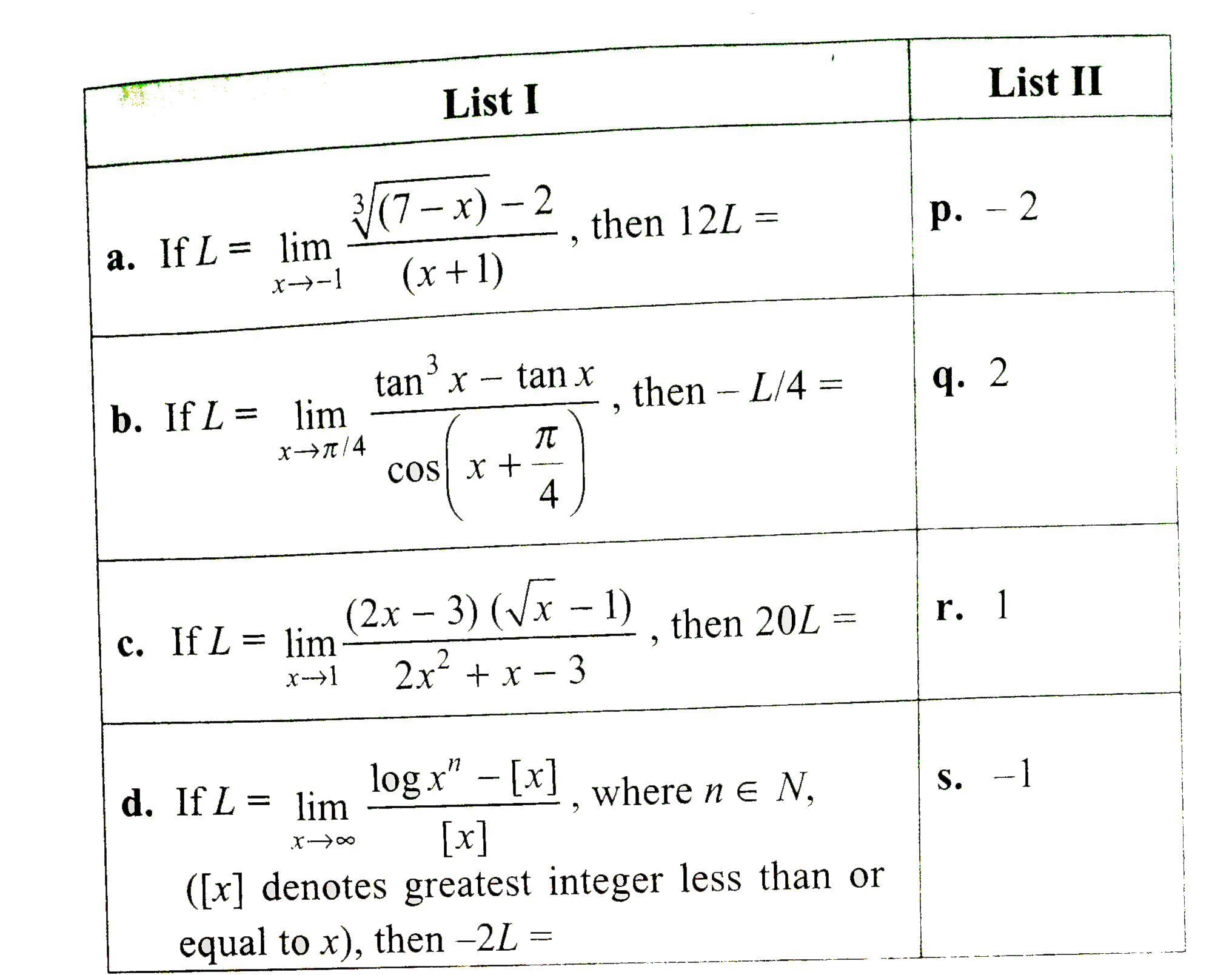If exists finitely, then
Equation has Solution in Tamil
The correct Answer is:D
and
Solving first three equations we get
Equation reduces to
reduces to
Topper's Solved these Questions
- BOOK - CENGAGECHAPTER - LIMITSEXERCISE - Exercise (Matrix)5videos
LIMITS
- BOOK - CENGAGECHAPTER - LIMITSEXERCISE - Exercise (Numerical)23videos
LIMITS
- BOOK - CENGAGECHAPTER - LIMITSEXERCISE - Exercise (Multiple)18videos
LIMITS
- BOOK - CENGAGECHAPTER - JEE 2019EXERCISE - Chapter 109videos
JEE 2019
- BOOK - CENGAGECHAPTER - LINEAR COMBINATION OF VECTORS, DEPENDENT AND INDEPENDENT VECTORSEXERCISE - DPP 1.210videos
LINEAR COMBINATION OF VECTORS, DEPENDENT AND INDEPENDENT VECTORS
Similar Questions
Match the following lists:
 07:33View Solution
07:33View SolutionThe reciprocal of the value of: (lim)n→∞(1−122)(1−132)(1−142)(1−1n2)is
04:31View SolutionLet f(x)={1+2xa,0≤x<1ax,1≤x<2.If(lim)x→1f(x)eξsts,thenais 1 (b) −1 (c) 2 (d) −2
02:23View SolutionIf y = y(x) is the solution of the differential equation, xdydx+2y=x2 satisfying y(1) = 1, then y(12) is equal to
02:43View SolutionThe number of integral values of p for which (p+1)ˆi−3ˆj+pˆk,pˆi+(p+1)ˆj−3ˆk and −3ˆi+pˆj+(p+1)ˆk are linearly dependent vectors is q
02:43View SolutionIf L=limx→0sinx+aex+be−x+cloge(1+x)x3 exists finitely, then
Equation ax2+bx+c=0 has03:37View SolutionIf L=limx→∞(x+1−√ax2+x+3) exists finitely then
The value of L is04:52View SolutionStatement 1: If limx→0{f(x)+sinxx} does not exist then limx→0f(x) does not exist.
Statement 2: limx→0(e1/x−1e1/x+1) does not exist.03:15View SolutionEvaluate: limx→0eax+eBx−2x
05:24View Solutionlimx→0eax−ebxx
06:27View SolutionIf L=limx→01x3(1√1+x−1+ax1+bx) exists,then
05:18View SolutionIf L=limx→0sinx+aex+be−x+cloge(1+x)x3 exists finitely, then
The value of L is05:30View SolutionIf L=limx→0sinx+aex+be−x+cloge(1+x)x3 exists finitely, then
Equation ax2+bx+c=0 has06:01View SolutionIf L=limx→0sinx+aex+be−x+cloge(1+x)x3 exists finitely, then
The solutions set of ||x+c|−2a|<4b is05:01View SolutionStatement 1: If limx→0{f(x)+sinxx} does not exist then limx→0f(x) does not exist.
Statement 2: limx→0(e1/x−1e1/x+1) does not exist.04:48View Solution

